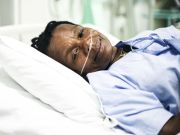TUESDAY, Sept. 29, 2020 (HealthDay News) — Young women who suffer a particularly deadly condition after a heart attack are 11% more likely to die from it than men, a new study finds.
Not only that, women aged 18 to 55 are less likely to receive the tests and aggressive treatment that men routinely receive, and are more likely to die in the hospital, the researchers added.
“It’s very difficult to understand exactly what’s causing this,” said lead researcher Dr. Saraschandra Vallabhajosyula, a clinical fellow in interventional cardiology at Emory University School of Medicine in Atlanta.
“A lot is related to unconscious or conscious bias when it comes to women and when it comes to acute cardiac conditions,” he said.
Much of the bias can be traced to doctors, the family or the health care system, Vallabhajosyula said.
Also, women who have heart attacks don’t always have the same symptoms as men, which can result in misdiagnosis, he added.
“They have atypical symptoms, such as belly pain, headaches, things that you don’t typically associate with having a heart attack,” Vallabhajosyula said. That’s why many heart attacks in women are missed.
Women are also more likely to dismiss their symptoms and wait longer before going to the hospital, which makes their condition worse and opens the door for a deadly condition known as cardiogenic shock, he explained.
Cardiogenic shock occurs when the heart can’t pump enough blood to keep the patient alive and is a leading cause of death after a heart attack. In fact, it kills about half of those who survived to be admitted to the hospital.
Eliminating these disparities starts by recognizing that they exist. For a long time, doctors have based their understanding of disease on the average middle-aged white man, Vallabhajosyula noted.
“We all know that is not true anymore. All subgroups are prone to different kinds of symptoms, so just recognition of the textbook description of symptoms is not true,” Vallabhajosyula said. “We as physicians or health care professionals have to lay aside any unconscious bias.”
Vallabhajosyula added that women have to be their own advocates. “They should never undermine their symptoms. They should take their bodies’ signals very seriously and seek care when needed,” he stressed.
Doctors and the health care system have to treat women as well as they treat men. “These are wonderful patients who are young and otherwise productive, so if we treat them right, they can go back to being productive, contributing members of society,” he said.
The new study was published online Sept. 29 in the journal Circulation: Heart Failure.
Dr. Claudia Gidea, associate director of the ventricular assist device and heart transplant program at NYU Langone Health, in New York City, said that women need to be educated about their risk for heart attack and what the symptoms might be.
“By publicizing this kind of study, we can increase recognition of risk factors for heart attack and atypical presentation. We need to do more educational programs so that when women come to the emergency room, they can collaborate with the physician and discuss their symptoms in such a way as to get an early diagnosis,” Gidea said
For the study, Vallabhajosyula’s team collected data on more than 90,600 U.S. men and women who had heart attacks complicated by cardiogenic shock.
Compared with men, the researchers found:
- Women were less likely to undergo coronary angiography to detect blockages in heart arteries (78% versus 81%).
- Women were less likely to undergo an angiography on the day they were admitted to the hospital (49% versus 54%).
- Women were less likely to receive stents or balloons to open blocked heart arteries (59% versus 64%).
- Women were less likely to be put on a mechanical pump to maintain heart function (50% versus 59%).
Vallabhajosyula’s group also found that Black women had more heart attacks with cardiogenic shock than men or white women. Women were also more likely than men to be from poorer, less educated families. They also suffered from other medical conditions or were admitted to rural or smaller hospitals.
Although women stayed in the hospital as long as men (average of 10 days), the average cost of hospitalization was significantly lower for women ($156,372 versus $167,669). That’s because women didn’t get the same treatment as men, Vallabhajosyula noted.
Many of the percentage differences seem small, but the clinical effect is large as the study included lots of patients, he said.
Dr. Nieca Goldberg is medical director of NYU Women’s Heart Program in New York City. She said, “All women need to know the signs of a heart attack — chest pressure, upper back or upper abdominal pressure, shortness of breath, weakness or fatigue, fainting or collapse. If they experience these symptoms, they need to call 911 without delay.”
To prevent heart disease, women should have a checkup for risk factors, such as high blood pressure, diabetes and high cholesterol. They should also quit smoking, adopt a Mediterranean style diet and exercise, she advised.
“If you don’t understand a doctor’s recommendations, ask them to explain them in a way you can understand, so you can be an active partner in your health care decisions,” Goldberg said.
More information
For more on women and heart attacks, head to the American Heart Association.
Copyright © 2025 HealthDay. All rights reserved.

